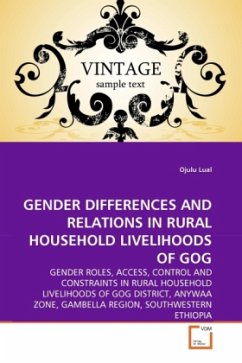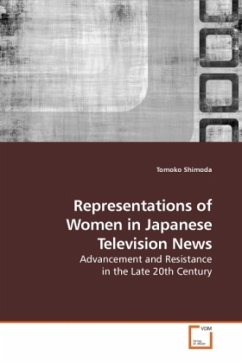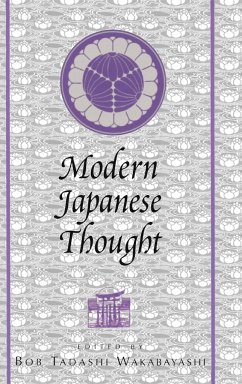
Sex Exclusive Differences in Modern Japanese Language
What operates upon speakers to maintain mutual exclusiveness of male speech and female speech
Versandkostenfrei!
Versandfertig in 6-10 Tagen
45,99 €
inkl. MwSt.

PAYBACK Punkte
23 °P sammeln!
Why can t a Japanese girl say Stop it! to themolester who is touching her body? Previous studies indicate that linguistic sexdifferences reflect the societal hierarchy of the speakers status.Nonetheless, in Japanese language, women cannot use some phrases regardless oftheir social positions. Those forms are used exclusively by men.On the contrary, the examination of conversation datareveals that sex differences occur with striking infrequency. Inorder to elucidate this complication, I postulate two types of rules,prescriptive and proscriptive, that operate upon speakers to maintainmutual exclu...
Why can t a Japanese girl say Stop it! to the
molester who is
touching her body?
Previous studies indicate that linguistic sex
differences reflect the
societal hierarchy of the speakers status.
Nonetheless, in Japanese
language, women cannot use some phrases regardless of
their social
positions. Those forms are used exclusively by men.
On the contrary, the examination of conversation data
reveals that
sex differences occur with striking infrequency. In
order to elucidate
this complication, I postulate two types of rules,
prescriptive and
proscriptive, that operate upon speakers to maintain
mutual
exclusiveness between two sexes. Proscriptive rules
prohibit
transgressions of the boundaries between the sexes.
Since preferred
images of a gender change over time, prescriptive
rules are fluid. On
the other hand, the violation of proscriptive rules
brings serious
penalty to speakers.
This book also explores the historical process in
which female
students speech, which was accused as coarse
speech at first,
became the model speech for Japanese women.
molester who is
touching her body?
Previous studies indicate that linguistic sex
differences reflect the
societal hierarchy of the speakers status.
Nonetheless, in Japanese
language, women cannot use some phrases regardless of
their social
positions. Those forms are used exclusively by men.
On the contrary, the examination of conversation data
reveals that
sex differences occur with striking infrequency. In
order to elucidate
this complication, I postulate two types of rules,
prescriptive and
proscriptive, that operate upon speakers to maintain
mutual
exclusiveness between two sexes. Proscriptive rules
prohibit
transgressions of the boundaries between the sexes.
Since preferred
images of a gender change over time, prescriptive
rules are fluid. On
the other hand, the violation of proscriptive rules
brings serious
penalty to speakers.
This book also explores the historical process in
which female
students speech, which was accused as coarse
speech at first,
became the model speech for Japanese women.












